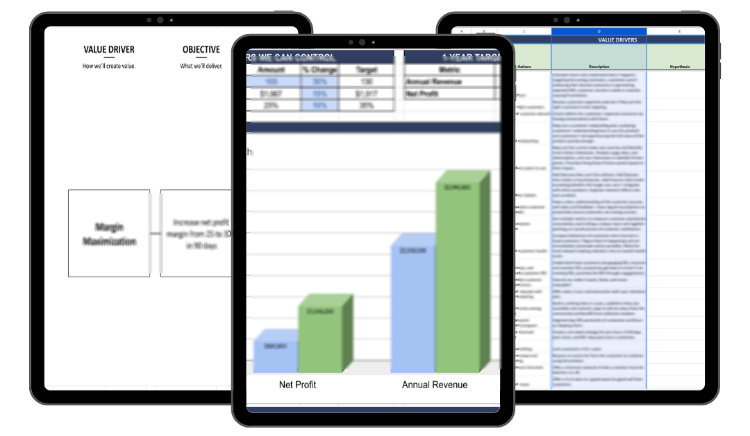How To Find Untapped Revenue Opportunities
With Revenue Optimization

“Revenue Optimization is a new and simple way to find untapped revenue opportunities through management of expenses, pricing, customer acquisition, retention, and expansion..” – Steven Marin

7 Steps To Revenue Optimization
First, we’ll focus on “value” and then “volume”. Value drivers are much sales are worth to you. Volume drivers are the number of sales you get.
Value drivers are:
- Margin Maximization – how to quickly reduce expenses and increase profit
- Pricing Optimization – how to confidently raise prices without losing customers
- Customer Expansion – how to sell more to your customers
Volume drivers are:
- Customer Retention – how to keep your customers forever
- Market Penetration – how to get more customers in your market
- Market Expansion – how to get more customers in new markets
- Product Expansion – how to sell new products to new and existing customers
Let’s go deeper into each…
1. Margin Maximization
Quickly reduce expenses and increase profit.
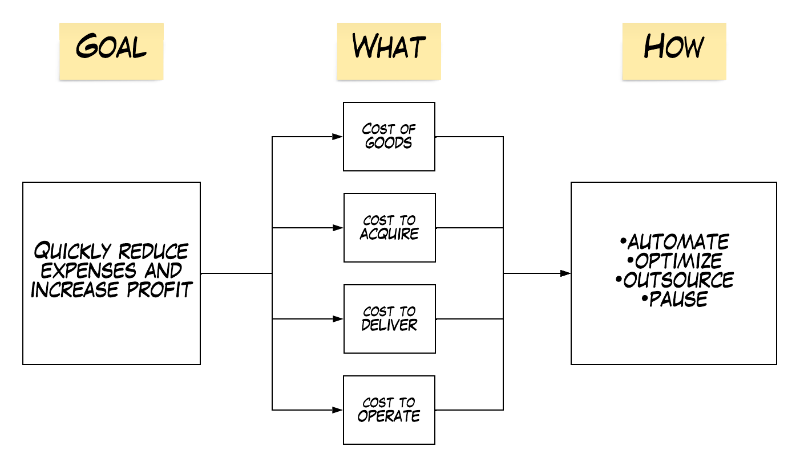
In margin maximization, we look at the 4 main cost centers of your business:
- Cost of goods – how you produce your product
- Cost to acquire – how you get customers
- Cost to deliver – how you fulfill
- Cost to operate – how you keep the lights on
We then look for opportunities to:
- Automate – Can it be done faster? (Tech or process)
- Optimize – Can it be done better? (In-house)
- Outsource – Can it be done cheaper by someone else? (Vendors)
- Pause – Can it be cut?
Steve’s take: “Years ago, I worked with an advertising agency who tried to offer content as a service. They brought in unnecessary expenses from hiring writers and designers; to investing in expensive camera equipment. This was not the agency’s core competency and they lost money on those projects. Instead, they should’ve outsourced the content creation and just delivered the desired outcome to their clients; accepting the services fee and giving a small percentage to the vendor—all while retaining a nice profit from those services.
The same goes for a startup I worked with that had THREE different HR tools on their books. Why not cut two and unify it all under one platform?
Margin maximization is all about looking for the inefficiencies that have come with the growth of your business.”
2. Pricing Optimization
Confidently raise prices without losing customers.
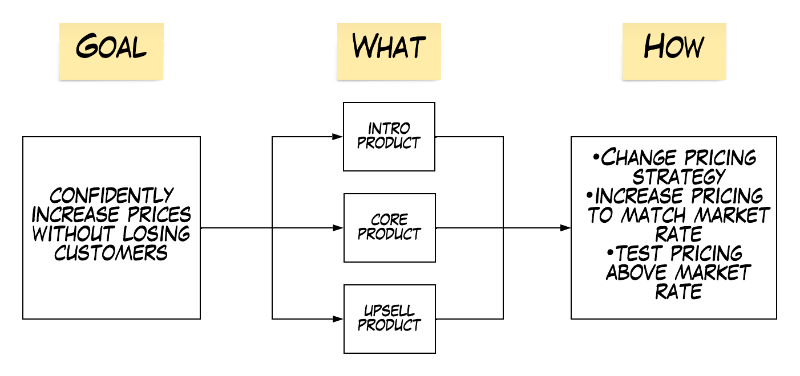
The purpose of pricing optimization is to increase revenue (and profit) with the least amount of work. Look at your product suite.
- Can the pricing strategy be changed? ie. value-based pricing
- If pricing has not been adjusted over time—can it be increased to match market rate?
- Can we test pricing above market rate and still not lose a single customer? (Increase the perceived value of the offer)
Steve’s take: “If you’re afraid to raise prices because you think you’ll lose customers, you’re not alone.
But if you’re relying on being the cheapest option then that’s a race to the bottom and you won’t be able to offer the very best to your customer. There will always be someone out there that can go lower.
So why not do the opposite?
Luckily, there are ways to justify a price increase to your customers by giving them more perceived value without it costing you. A win win.”
3. Customer Retention
Keep your customers forever.
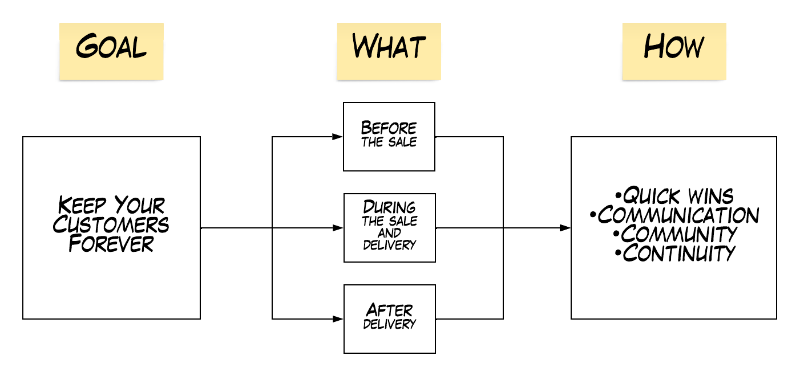
Customer Acquisition is expensive. It will only get more expensive with time as the economy changes, the market gets more competitive, ad space on platforms get filled, etc.
Think about your customer relationship in 3 phases: before the sale occurs, during the sale and delivery of your product, and after delivery when your customer has consumed your solution.
With customer retention, we keep the relationship with your existing customers going using 4 tools:
- Quick wins – increase the likelihood they’ll stay by tracking time to value (TTV)—how quick you can get them to hit a milestone with your product
- Communication – send your prospects and customers continuous communication demonstrating the ROI they’ll get, are getting, or will continue getting
- Community – be the home for a community centered around the desired outcome your customers achieve with your product—a common goal, a common enemy, and your product delivering that result
- Continuity – build out a suite of products that continues the relationship in tiers. After a customer consumes your product, what new problems are created that you can solve?
Steve’s take: “When I worked with an e-learning business, they had 100% customer churn because once the customer finished the training, there was nothing left for them to do but move on. A huge mistake.
The company had fallen into the “this is just how this industry is” trap of thinking their business model can’t have recurring revenue.
Why not create a full suite of products that continue that relationship?
Instead, they were in the cycle of constant customer acquisition, with an ever increasing cost to acquire a customer (CAC), because they refused to expand their product suite to continue the relationship with their customers.”
4. Customer Expansion
Sell more to your customers.
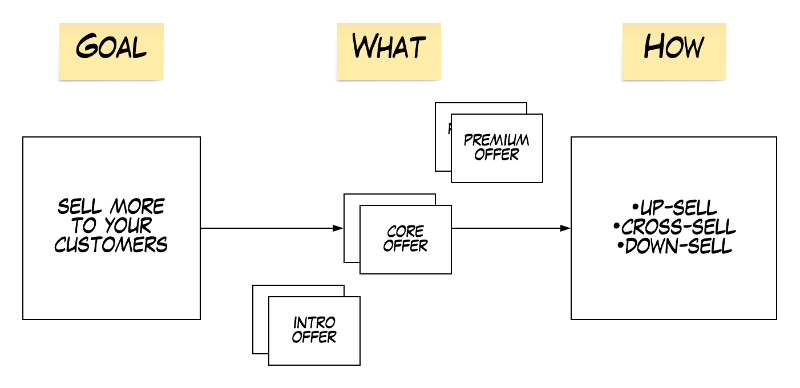
It’s always easier to sell more to an existing customer than to just focus on selling new customers one time. To do this you must think about how to continue the customer relationship by expanding your suite of products.
- Intro offer – a low-risk, low-cost, low commitment solution that gets your foot in the door
- Core offer – your best-selling, flagship solution
- Premium offer – the solution your VIP customers take with all the bells and whistles
To sell more to your customers, think about where they currently are and look for ways to:
- Up-sell – move them up into a more valuable solution
- Cross-sell – move them to another solution that solves a different problem
- Down-sell – move them to a lower-tiered solution if the current solution is no longer needed
Steve’s take: “Lifetime value (LTV) is so important. This is how much a customer is worth to your business over the lifetime of their relationship with you. This means, if you only have one product to sell them, then you need to expand your product suite to create continuity.
And you do want to keep them longer…
Imagine if a customer only buys one time at $100. That means you can’t invest any more than that to break even! Now imagine they buy once at $100 but you are able to keep them longer AND expand the relationship with valuable up-sells or cross-sells that make them worth $1500 over their lifetime.
What opportunities are then created for you?”
5. Market Penetration
Get more customers in your market.
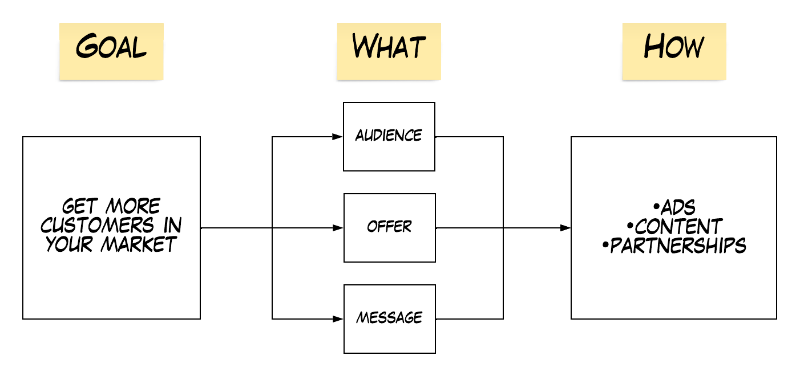
This is customer acquisition in your current market. You need to know these 3 things:
- Audience – who is your ideal customer?
- Offer – what irresistible offer will you make them?
- Message – how will you communicate the value of that offer?
Next, we’ll choose how we’ll find them:
- Ads – any traditional or digital advertisement (Facebook ads, Google ads, billboards, radio spots, etc.)
- Content – sharing your expertise through information (social media, events, podcasts, SEO, email, etc.)
- Partnerships – working with others who have your ideal customers (affiliates, referral partners, joint-ventures, co-branded sponsorships, etc.)
Steve’s take: “Consistent customer acquisition doesn’t just come from fishing in one pond. To capture greater market share (and customers), you need to think of what other ponds are available to fish in.”
6. Market Expansion
Get more customers in new markets.
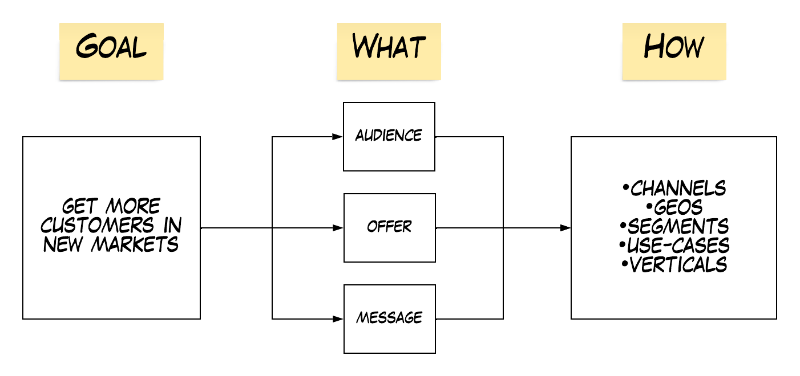
When you’re ready to expand to other areas of your total addressable market (TAM), you will define the audience, offer, and message as we reviewed above.
Then you’ll choose where to expand:
- Channels – use a new sales channel (ex. ads, content, partnerships)
- Geos – find new geographies to target (ex. cities, states, countries)
- Segments – new customers across our TAM (ex. solopreneurs, SMBs, mid-market, enterprise)
- Use-cases – new customers that use our product differently (ex. sneakers for casual wear, personal style, fitness, professional sports)
- Verticals – new customers within our target industry (ex. legal services: personal injury, criminal defense, business law, family law)
Steve’s take: “If you’re an established business, you already have one consistent source for customers. You’ll quickly want to find another sales channel—here’s why.
I once worked with a business owner with a $2M clothing brand. Business was booming until their only sales channel: Facebook Ads, removed certain targeting options.
That $2M business became a $400K business overnight.
Diversification is critical, not just with sales channels, but products, customers, geos, etc.”
7. Product Expansion
Sell new products to new and existing customers.
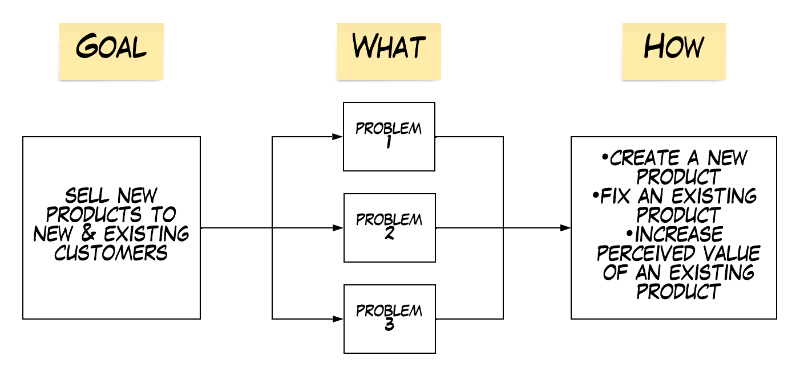
There are times where we’ll find unmet needs while interacting with our customers. This is the best time to consider expansion your suite of products.
First clarify which problem (or unmet need) you want to solve, next define who that solution is for, then look to do expand your products:
- Do we create a new product?
- Do we fix an existing product?
- Do we increase the perceived value of an existing product?
Steve’s take: “Customer acquisition isn’t just where to find new customers, it’s also about how you can solve unmet needs of customers in the places where you’re already finding them. This is product expansion.”

